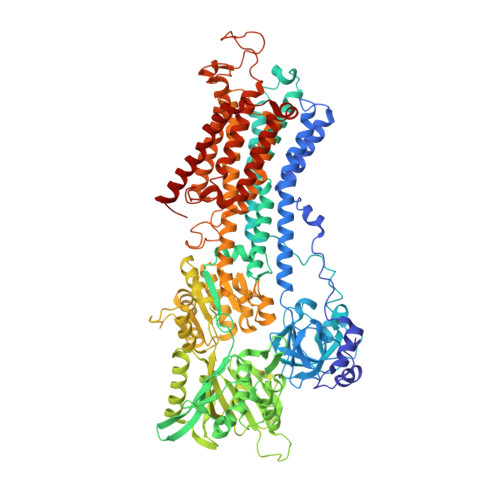Phosphoryl transfer and calcium ion occlusion in the calcium pump.
Sorensen, T.L.-M., Moller, J.V., Nissen, P.(2004) Science 304: 1672-1675
- PubMed: 15192230
- DOI: https://doi.org/10.1126/science.1099366
- Primary Citation of Related Structures:
1T5S, 1T5T - PubMed Abstract:
A tight coupling between adenosine triphosphate (ATP) hydrolysis and vectorial ion transport has to be maintained by ATP-consuming ion pumps. We report two crystal structures of Ca2+-bound sarco(endo)plasmic reticulum Ca2+-adenosine triphosphatase (SERCA) at 2.6 and 2.9 angstrom resolution in complex with (i) a nonhydrolyzable ATP analog [adenosine (beta-gamma methylene)-triphosphate] and (ii) adenosine diphosphate plus aluminum fluoride. SERCA reacts with ATP by an associative mechanism mediated by two Mg2+ ions to form an aspartyl-phosphorylated intermediate state (Ca2-E1 approximately P). The conformational changes that accompany the reaction with ATP pull the transmembrane helices 1 and 2 and close a cytosolic entrance for Ca2+, thereby preventing backflow before Ca2+ is released on the other side of the membrane.
Organizational Affiliation:
Department of Molecular Biology, University of Aarhus, Gustav Wieds Vej 10C, DK-8000 Aarhus C, Denmark.


















